Design and Implementation of an E-Learning Platform by [Student Name]
VerifiedAdded on 2022/07/07
|13
|1671
|45
Project
AI Summary
This project report details the design and implementation of an e-learning platform, undertaken as a Bachelor of Science (Honours) degree requirement in Computer Science. The project begins with an introduction to the background of e-learning, statement of the problem, motivation, aims, objectives, scope, significance, and methodology. The literature review provides an overview of e-learning systems and their history. The methodology chapter covers fact-finding, system analysis, design (architectural and database), functional requirements, and system modeling including use case and class diagrams. The implementation chapter discusses programming language selection (PHP, MySQL), hardware and software requirements, communication interfaces, development tools, system maintenance, and application interfaces. The project concludes with a summary, conclusions, and recommendations, providing a foundation for future e-learning projects.
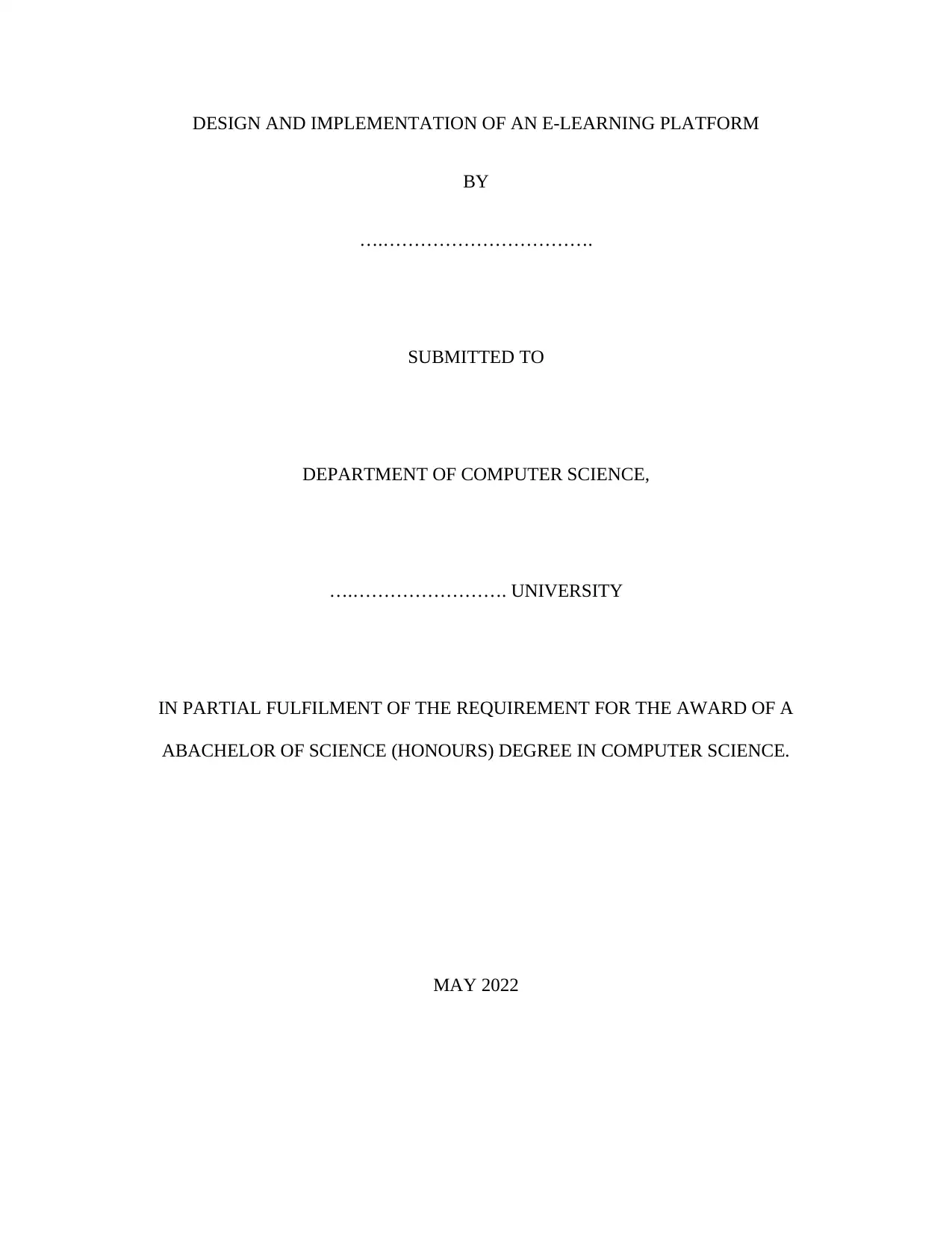
DESIGN AND IMPLEMENTATION OF AN E-LEARNING PLATFORM
BY
….…………………………….
SUBMITTED TO
DEPARTMENT OF COMPUTER SCIENCE,
….……………………. UNIVERSITY
IN PARTIAL FULFILMENT OF THE REQUIREMENT FOR THE AWARD OF A
ABACHELOR OF SCIENCE (HONOURS) DEGREE IN COMPUTER SCIENCE.
MAY 2022
BY
….…………………………….
SUBMITTED TO
DEPARTMENT OF COMPUTER SCIENCE,
….……………………. UNIVERSITY
IN PARTIAL FULFILMENT OF THE REQUIREMENT FOR THE AWARD OF A
ABACHELOR OF SCIENCE (HONOURS) DEGREE IN COMPUTER SCIENCE.
MAY 2022
Paraphrase This Document
Need a fresh take? Get an instant paraphrase of this document with our AI Paraphraser
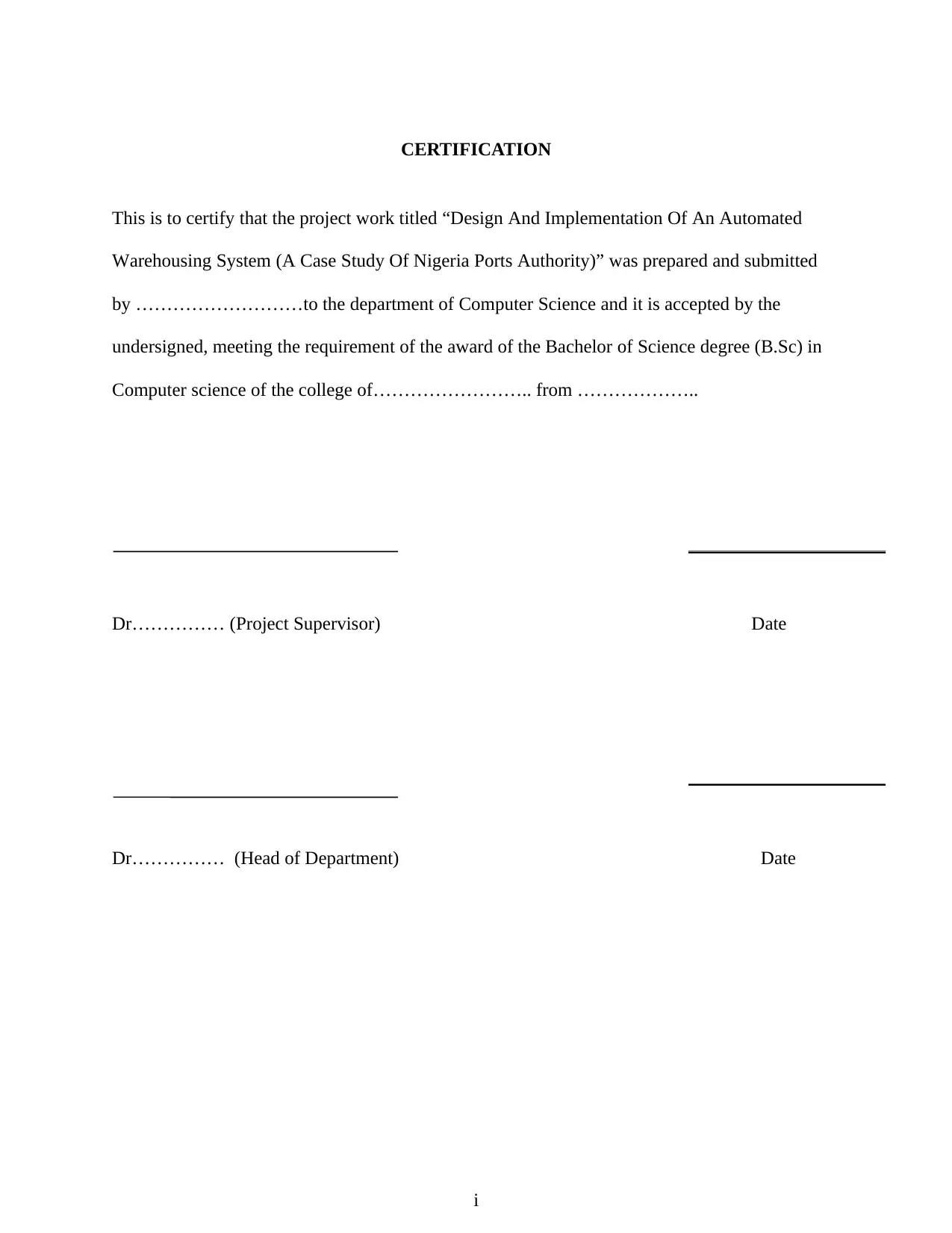
CERTIFICATION
This is to certify that the project work titled “Design And Implementation Of An Automated
Warehousing System (A Case Study Of Nigeria Ports Authority)” was prepared and submitted
by ………………………to the department of Computer Science and it is accepted by the
undersigned, meeting the requirement of the award of the Bachelor of Science degree (B.Sc) in
Computer science of the college of…………………….. from ………………..
Dr…………… (Project Supervisor) Date
Dr…………… (Head of Department) Date
i
This is to certify that the project work titled “Design And Implementation Of An Automated
Warehousing System (A Case Study Of Nigeria Ports Authority)” was prepared and submitted
by ………………………to the department of Computer Science and it is accepted by the
undersigned, meeting the requirement of the award of the Bachelor of Science degree (B.Sc) in
Computer science of the college of…………………….. from ………………..
Dr…………… (Project Supervisor) Date
Dr…………… (Head of Department) Date
i
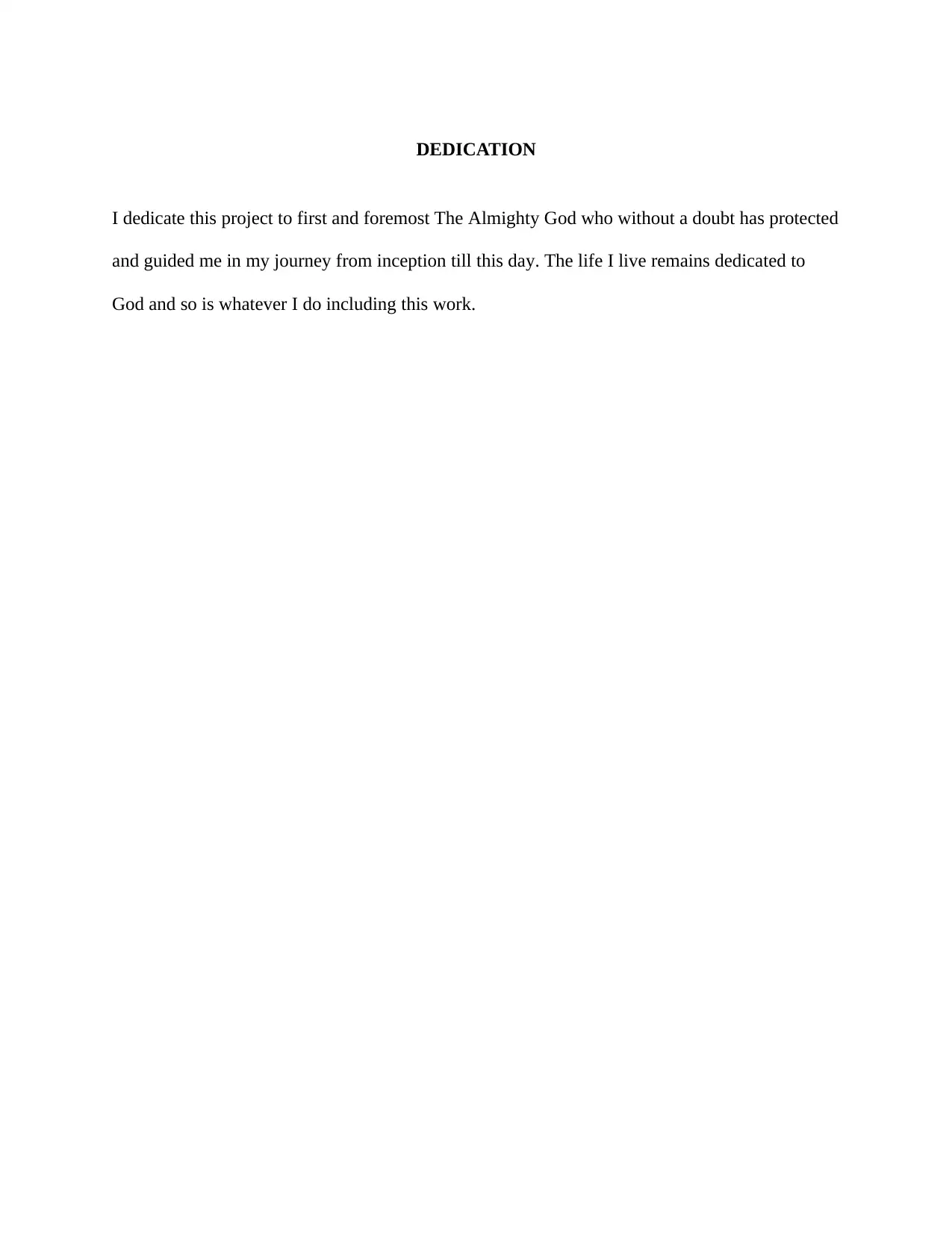
DEDICATION
I dedicate this project to first and foremost The Almighty God who without a doubt has protected
and guided me in my journey from inception till this day. The life I live remains dedicated to
God and so is whatever I do including this work.
I dedicate this project to first and foremost The Almighty God who without a doubt has protected
and guided me in my journey from inception till this day. The life I live remains dedicated to
God and so is whatever I do including this work.
⊘ This is a preview!⊘
Do you want full access?
Subscribe today to unlock all pages.

Trusted by 1+ million students worldwide
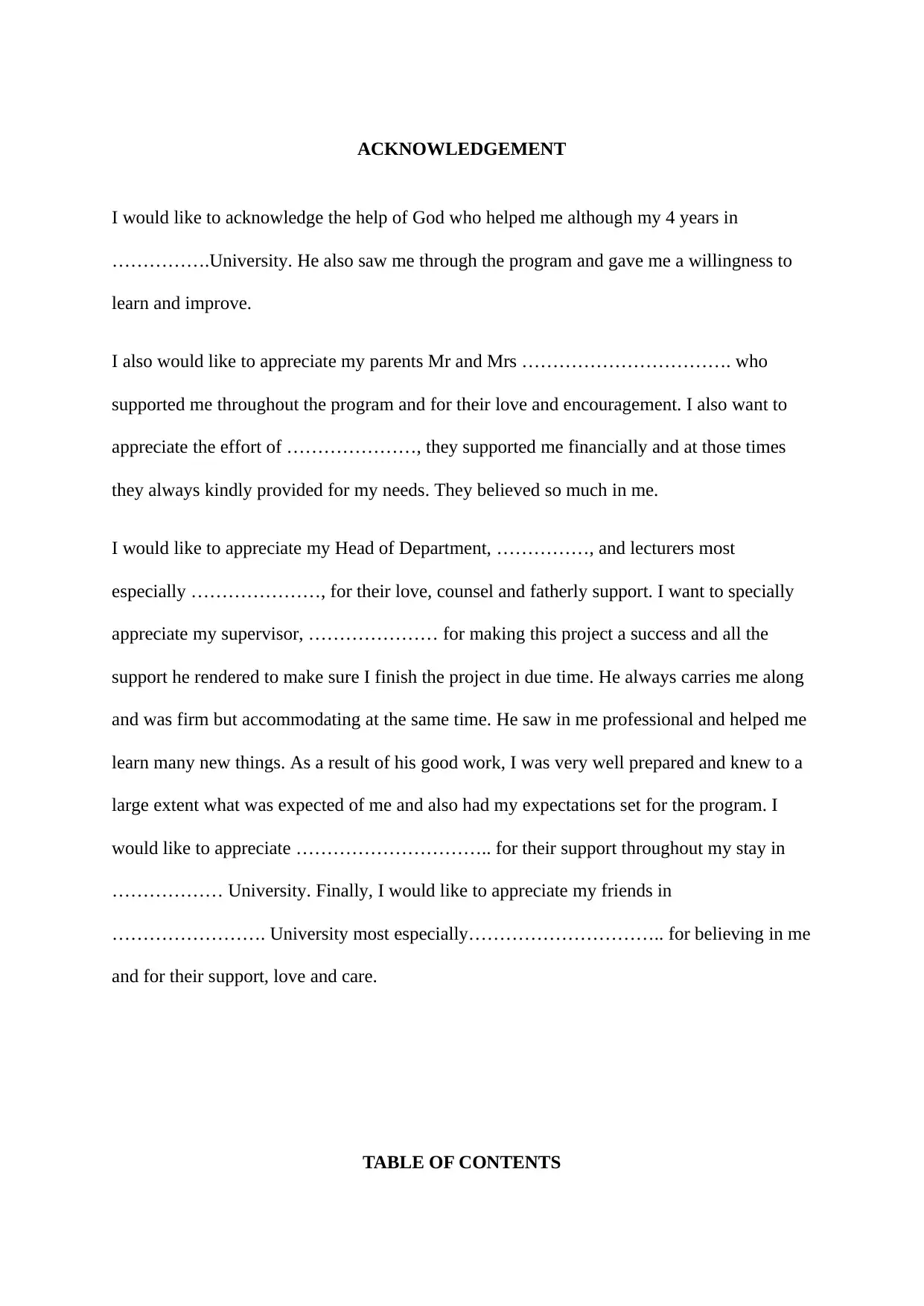
ACKNOWLEDGEMENT
I would like to acknowledge the help of God who helped me although my 4 years in
…………….University. He also saw me through the program and gave me a willingness to
learn and improve.
I also would like to appreciate my parents Mr and Mrs ……………………………. who
supported me throughout the program and for their love and encouragement. I also want to
appreciate the effort of …………………, they supported me financially and at those times
they always kindly provided for my needs. They believed so much in me.
I would like to appreciate my Head of Department, ……………, and lecturers most
especially …………………, for their love, counsel and fatherly support. I want to specially
appreciate my supervisor, ………………… for making this project a success and all the
support he rendered to make sure I finish the project in due time. He always carries me along
and was firm but accommodating at the same time. He saw in me professional and helped me
learn many new things. As a result of his good work, I was very well prepared and knew to a
large extent what was expected of me and also had my expectations set for the program. I
would like to appreciate ………………………….. for their support throughout my stay in
……………… University. Finally, I would like to appreciate my friends in
……………………. University most especially………………………….. for believing in me
and for their support, love and care.
TABLE OF CONTENTS
I would like to acknowledge the help of God who helped me although my 4 years in
…………….University. He also saw me through the program and gave me a willingness to
learn and improve.
I also would like to appreciate my parents Mr and Mrs ……………………………. who
supported me throughout the program and for their love and encouragement. I also want to
appreciate the effort of …………………, they supported me financially and at those times
they always kindly provided for my needs. They believed so much in me.
I would like to appreciate my Head of Department, ……………, and lecturers most
especially …………………, for their love, counsel and fatherly support. I want to specially
appreciate my supervisor, ………………… for making this project a success and all the
support he rendered to make sure I finish the project in due time. He always carries me along
and was firm but accommodating at the same time. He saw in me professional and helped me
learn many new things. As a result of his good work, I was very well prepared and knew to a
large extent what was expected of me and also had my expectations set for the program. I
would like to appreciate ………………………….. for their support throughout my stay in
……………… University. Finally, I would like to appreciate my friends in
……………………. University most especially………………………….. for believing in me
and for their support, love and care.
TABLE OF CONTENTS
Paraphrase This Document
Need a fresh take? Get an instant paraphrase of this document with our AI Paraphraser
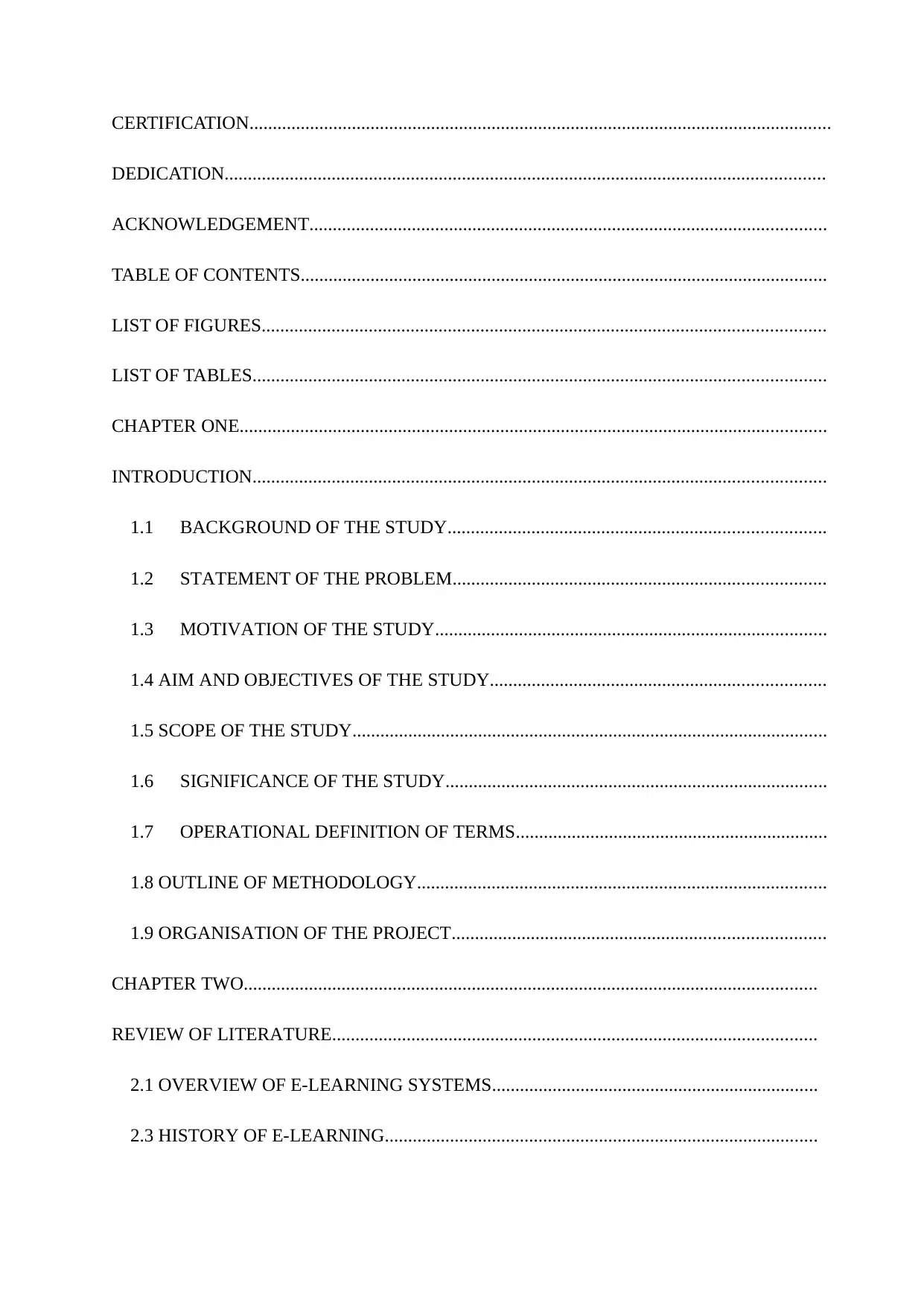
CERTIFICATION.............................................................................................................................
DEDICATION.................................................................................................................................
ACKNOWLEDGEMENT...............................................................................................................
TABLE OF CONTENTS.................................................................................................................
LIST OF FIGURES.........................................................................................................................
LIST OF TABLES...........................................................................................................................
CHAPTER ONE..............................................................................................................................
INTRODUCTION...........................................................................................................................
1.1 BACKGROUND OF THE STUDY.................................................................................
1.2 STATEMENT OF THE PROBLEM................................................................................
1.3 MOTIVATION OF THE STUDY....................................................................................
1.4 AIM AND OBJECTIVES OF THE STUDY........................................................................
1.5 SCOPE OF THE STUDY......................................................................................................
1.6 SIGNIFICANCE OF THE STUDY..................................................................................
1.7 OPERATIONAL DEFINITION OF TERMS...................................................................
1.8 OUTLINE OF METHODOLOGY........................................................................................
1.9 ORGANISATION OF THE PROJECT................................................................................
CHAPTER TWO...........................................................................................................................
REVIEW OF LITERATURE........................................................................................................
2.1 OVERVIEW OF E-LEARNING SYSTEMS......................................................................
2.3 HISTORY OF E-LEARNING.............................................................................................
DEDICATION.................................................................................................................................
ACKNOWLEDGEMENT...............................................................................................................
TABLE OF CONTENTS.................................................................................................................
LIST OF FIGURES.........................................................................................................................
LIST OF TABLES...........................................................................................................................
CHAPTER ONE..............................................................................................................................
INTRODUCTION...........................................................................................................................
1.1 BACKGROUND OF THE STUDY.................................................................................
1.2 STATEMENT OF THE PROBLEM................................................................................
1.3 MOTIVATION OF THE STUDY....................................................................................
1.4 AIM AND OBJECTIVES OF THE STUDY........................................................................
1.5 SCOPE OF THE STUDY......................................................................................................
1.6 SIGNIFICANCE OF THE STUDY..................................................................................
1.7 OPERATIONAL DEFINITION OF TERMS...................................................................
1.8 OUTLINE OF METHODOLOGY........................................................................................
1.9 ORGANISATION OF THE PROJECT................................................................................
CHAPTER TWO...........................................................................................................................
REVIEW OF LITERATURE........................................................................................................
2.1 OVERVIEW OF E-LEARNING SYSTEMS......................................................................
2.3 HISTORY OF E-LEARNING.............................................................................................
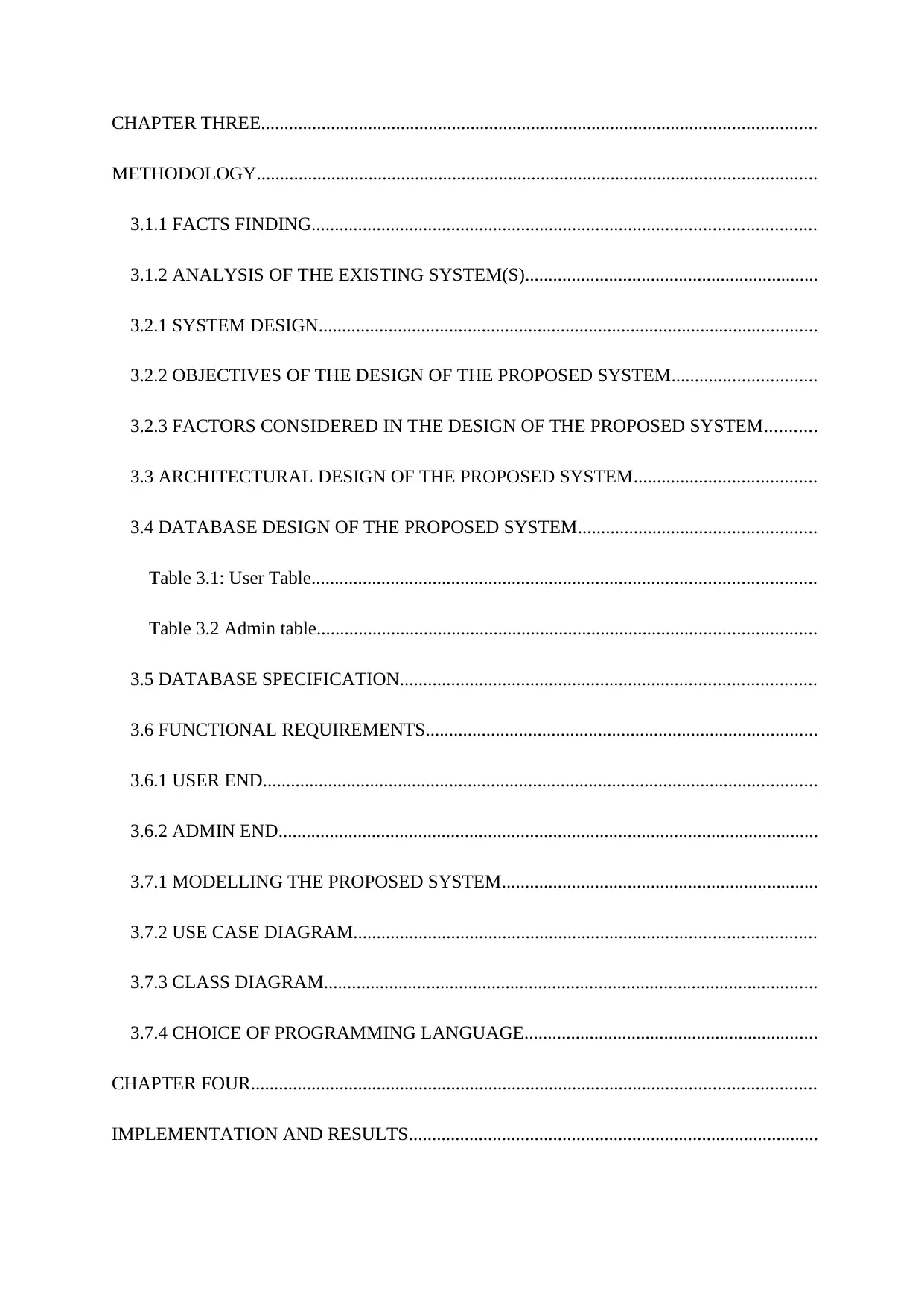
CHAPTER THREE.......................................................................................................................
METHODOLOGY........................................................................................................................
3.1.1 FACTS FINDING............................................................................................................
3.1.2 ANALYSIS OF THE EXISTING SYSTEM(S)...............................................................
3.2.1 SYSTEM DESIGN...........................................................................................................
3.2.2 OBJECTIVES OF THE DESIGN OF THE PROPOSED SYSTEM...............................
3.2.3 FACTORS CONSIDERED IN THE DESIGN OF THE PROPOSED SYSTEM...........
3.3 ARCHITECTURAL DESIGN OF THE PROPOSED SYSTEM.......................................
3.4 DATABASE DESIGN OF THE PROPOSED SYSTEM...................................................
Table 3.1: User Table............................................................................................................
Table 3.2 Admin table...........................................................................................................
3.5 DATABASE SPECIFICATION.........................................................................................
3.6 FUNCTIONAL REQUIREMENTS....................................................................................
3.6.1 USER END.......................................................................................................................
3.6.2 ADMIN END....................................................................................................................
3.7.1 MODELLING THE PROPOSED SYSTEM....................................................................
3.7.2 USE CASE DIAGRAM...................................................................................................
3.7.3 CLASS DIAGRAM..........................................................................................................
3.7.4 CHOICE OF PROGRAMMING LANGUAGE...............................................................
CHAPTER FOUR.........................................................................................................................
IMPLEMENTATION AND RESULTS........................................................................................
METHODOLOGY........................................................................................................................
3.1.1 FACTS FINDING............................................................................................................
3.1.2 ANALYSIS OF THE EXISTING SYSTEM(S)...............................................................
3.2.1 SYSTEM DESIGN...........................................................................................................
3.2.2 OBJECTIVES OF THE DESIGN OF THE PROPOSED SYSTEM...............................
3.2.3 FACTORS CONSIDERED IN THE DESIGN OF THE PROPOSED SYSTEM...........
3.3 ARCHITECTURAL DESIGN OF THE PROPOSED SYSTEM.......................................
3.4 DATABASE DESIGN OF THE PROPOSED SYSTEM...................................................
Table 3.1: User Table............................................................................................................
Table 3.2 Admin table...........................................................................................................
3.5 DATABASE SPECIFICATION.........................................................................................
3.6 FUNCTIONAL REQUIREMENTS....................................................................................
3.6.1 USER END.......................................................................................................................
3.6.2 ADMIN END....................................................................................................................
3.7.1 MODELLING THE PROPOSED SYSTEM....................................................................
3.7.2 USE CASE DIAGRAM...................................................................................................
3.7.3 CLASS DIAGRAM..........................................................................................................
3.7.4 CHOICE OF PROGRAMMING LANGUAGE...............................................................
CHAPTER FOUR.........................................................................................................................
IMPLEMENTATION AND RESULTS........................................................................................
⊘ This is a preview!⊘
Do you want full access?
Subscribe today to unlock all pages.

Trusted by 1+ million students worldwide
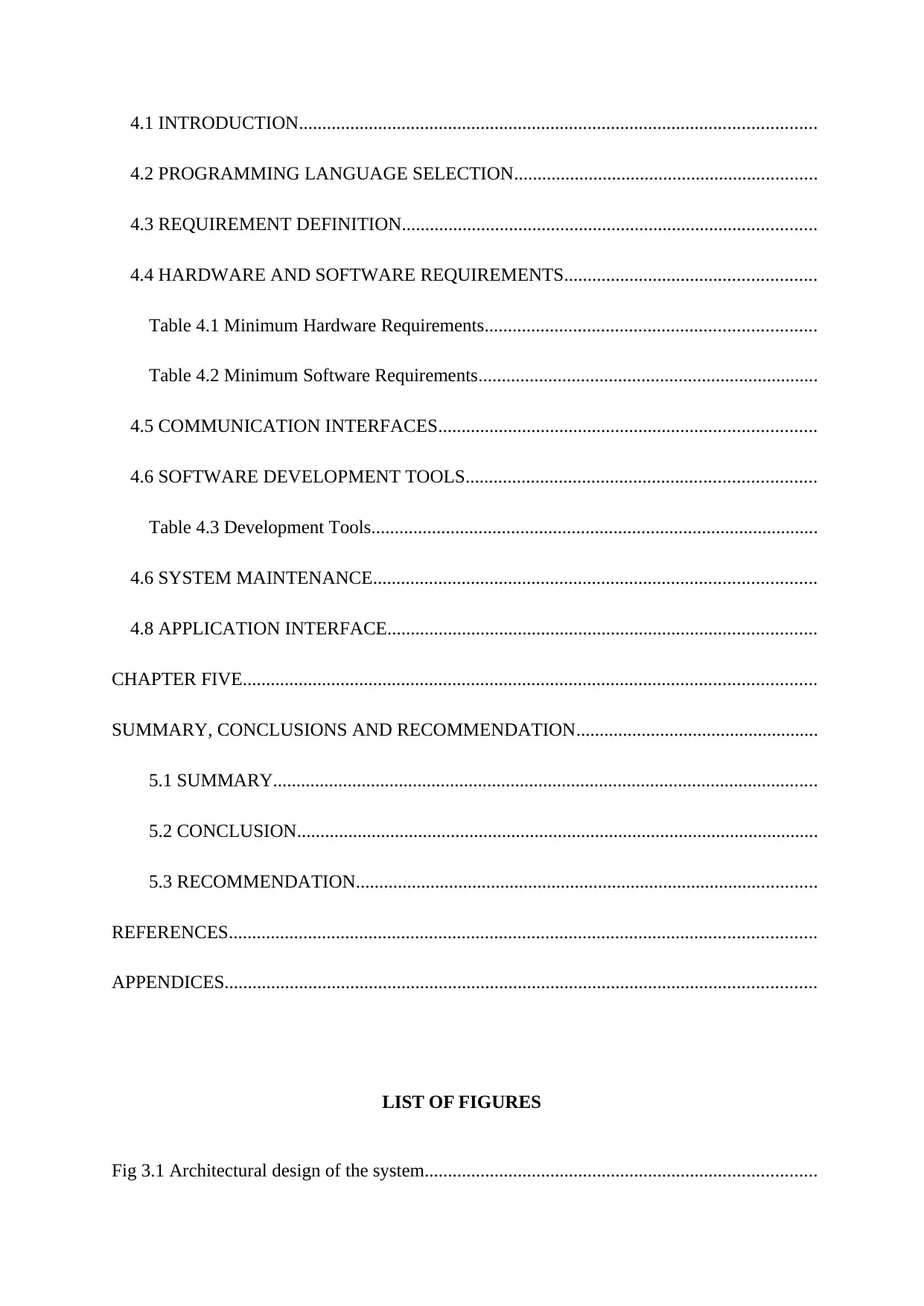
4.1 INTRODUCTION...............................................................................................................
4.2 PROGRAMMING LANGUAGE SELECTION.................................................................
4.3 REQUIREMENT DEFINITION.........................................................................................
4.4 HARDWARE AND SOFTWARE REQUIREMENTS......................................................
Table 4.1 Minimum Hardware Requirements.......................................................................
Table 4.2 Minimum Software Requirements.........................................................................
4.5 COMMUNICATION INTERFACES.................................................................................
4.6 SOFTWARE DEVELOPMENT TOOLS...........................................................................
Table 4.3 Development Tools................................................................................................
4.6 SYSTEM MAINTENANCE...............................................................................................
4.8 APPLICATION INTERFACE............................................................................................
CHAPTER FIVE...........................................................................................................................
SUMMARY, CONCLUSIONS AND RECOMMENDATION....................................................
5.1 SUMMARY.....................................................................................................................
5.2 CONCLUSION................................................................................................................
5.3 RECOMMENDATION...................................................................................................
REFERENCES..............................................................................................................................
APPENDICES...............................................................................................................................
LIST OF FIGURES
Fig 3.1 Architectural design of the system....................................................................................
4.2 PROGRAMMING LANGUAGE SELECTION.................................................................
4.3 REQUIREMENT DEFINITION.........................................................................................
4.4 HARDWARE AND SOFTWARE REQUIREMENTS......................................................
Table 4.1 Minimum Hardware Requirements.......................................................................
Table 4.2 Minimum Software Requirements.........................................................................
4.5 COMMUNICATION INTERFACES.................................................................................
4.6 SOFTWARE DEVELOPMENT TOOLS...........................................................................
Table 4.3 Development Tools................................................................................................
4.6 SYSTEM MAINTENANCE...............................................................................................
4.8 APPLICATION INTERFACE............................................................................................
CHAPTER FIVE...........................................................................................................................
SUMMARY, CONCLUSIONS AND RECOMMENDATION....................................................
5.1 SUMMARY.....................................................................................................................
5.2 CONCLUSION................................................................................................................
5.3 RECOMMENDATION...................................................................................................
REFERENCES..............................................................................................................................
APPENDICES...............................................................................................................................
LIST OF FIGURES
Fig 3.1 Architectural design of the system....................................................................................
Paraphrase This Document
Need a fresh take? Get an instant paraphrase of this document with our AI Paraphraser
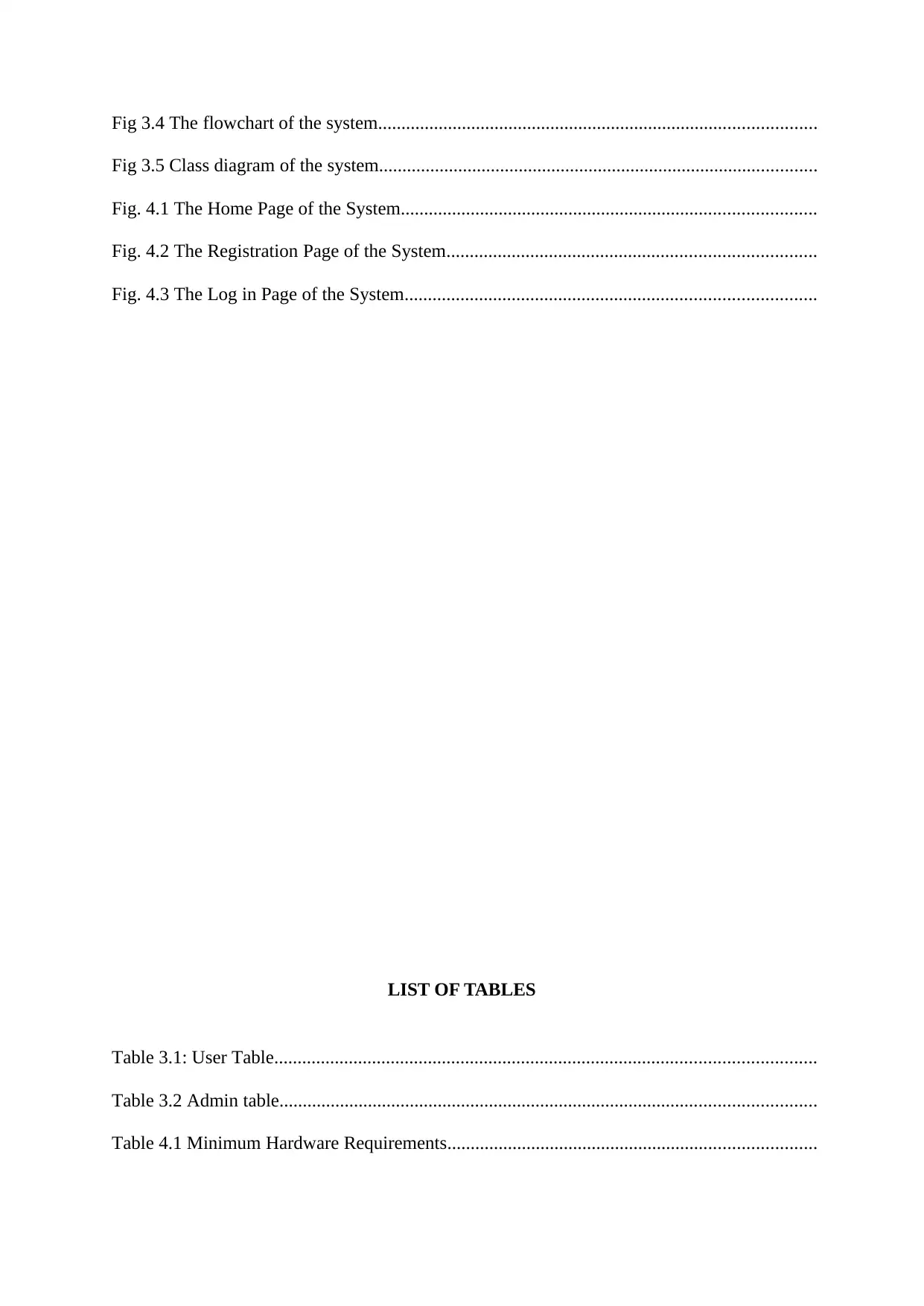
Fig 3.4 The flowchart of the system..............................................................................................
Fig 3.5 Class diagram of the system..............................................................................................
Fig. 4.1 The Home Page of the System.........................................................................................
Fig. 4.2 The Registration Page of the System...............................................................................
Fig. 4.3 The Log in Page of the System........................................................................................
LIST OF TABLES
Table 3.1: User Table....................................................................................................................
Table 3.2 Admin table...................................................................................................................
Table 4.1 Minimum Hardware Requirements...............................................................................
Fig 3.5 Class diagram of the system..............................................................................................
Fig. 4.1 The Home Page of the System.........................................................................................
Fig. 4.2 The Registration Page of the System...............................................................................
Fig. 4.3 The Log in Page of the System........................................................................................
LIST OF TABLES
Table 3.1: User Table....................................................................................................................
Table 3.2 Admin table...................................................................................................................
Table 4.1 Minimum Hardware Requirements...............................................................................
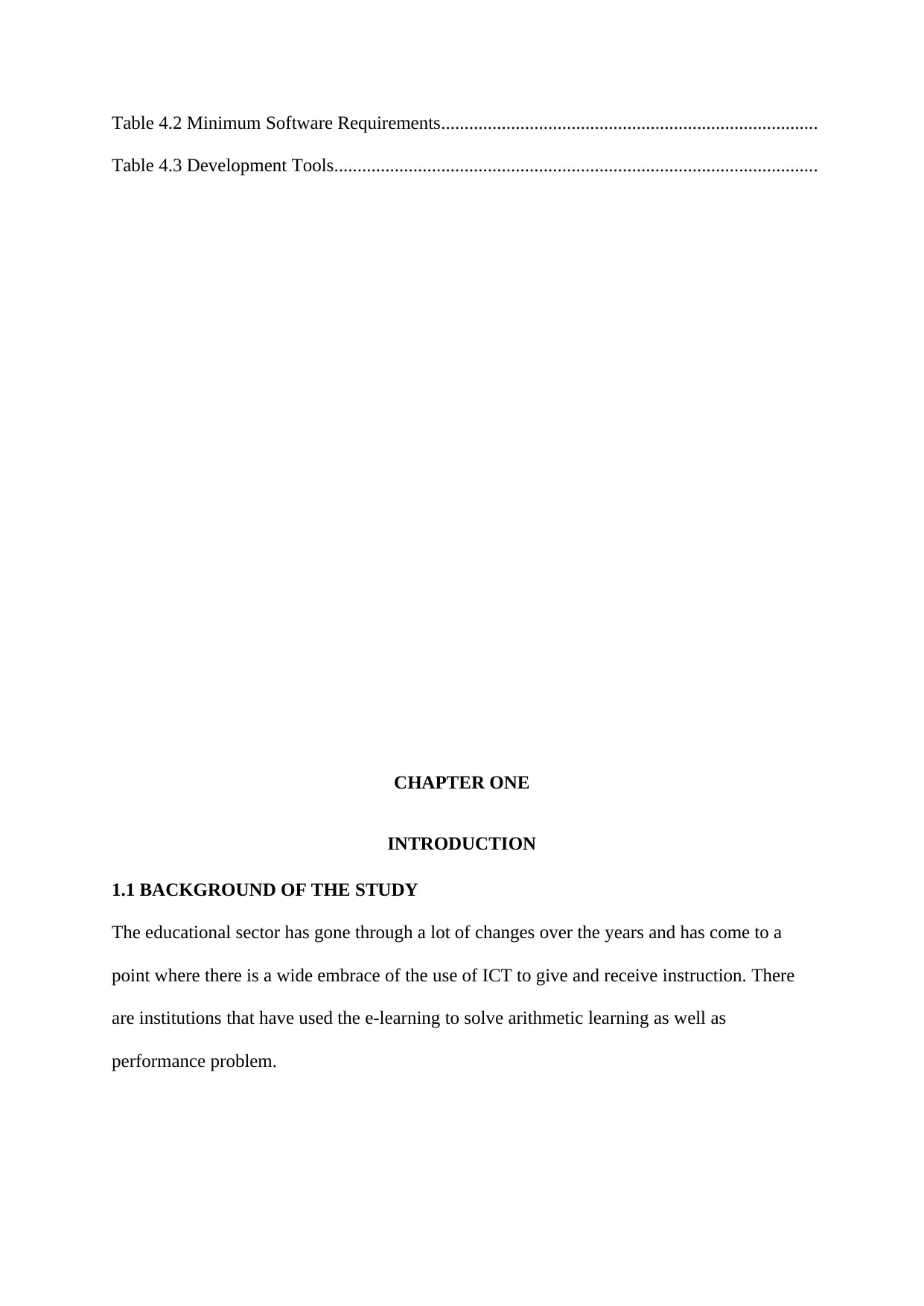
Table 4.2 Minimum Software Requirements.................................................................................
Table 4.3 Development Tools........................................................................................................
CHAPTER ONE
INTRODUCTION
1.1 BACKGROUND OF THE STUDY
The educational sector has gone through a lot of changes over the years and has come to a
point where there is a wide embrace of the use of ICT to give and receive instruction. There
are institutions that have used the e-learning to solve arithmetic learning as well as
performance problem.
Table 4.3 Development Tools........................................................................................................
CHAPTER ONE
INTRODUCTION
1.1 BACKGROUND OF THE STUDY
The educational sector has gone through a lot of changes over the years and has come to a
point where there is a wide embrace of the use of ICT to give and receive instruction. There
are institutions that have used the e-learning to solve arithmetic learning as well as
performance problem.
⊘ This is a preview!⊘
Do you want full access?
Subscribe today to unlock all pages.

Trusted by 1+ million students worldwide
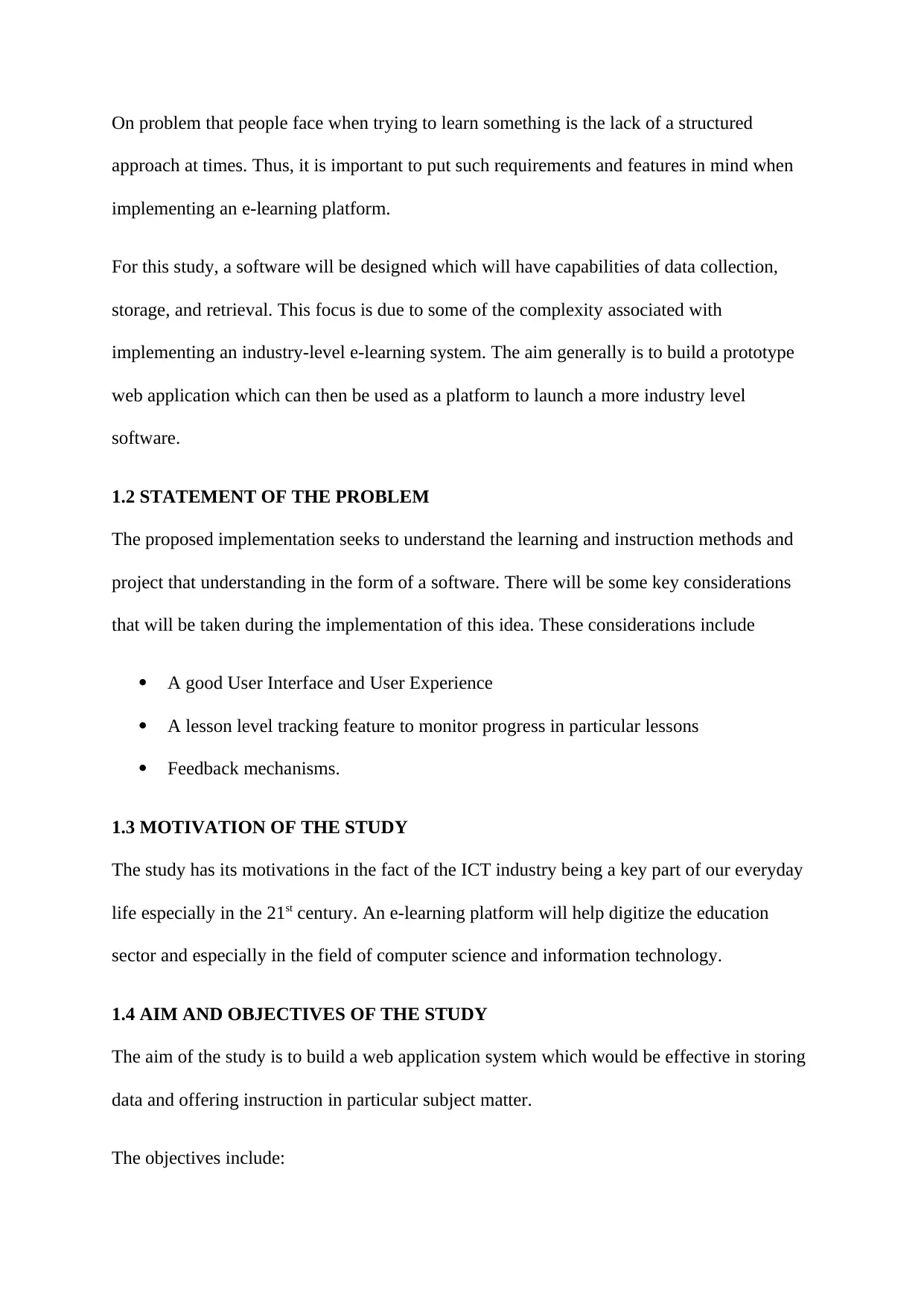
On problem that people face when trying to learn something is the lack of a structured
approach at times. Thus, it is important to put such requirements and features in mind when
implementing an e-learning platform.
For this study, a software will be designed which will have capabilities of data collection,
storage, and retrieval. This focus is due to some of the complexity associated with
implementing an industry-level e-learning system. The aim generally is to build a prototype
web application which can then be used as a platform to launch a more industry level
software.
1.2 STATEMENT OF THE PROBLEM
The proposed implementation seeks to understand the learning and instruction methods and
project that understanding in the form of a software. There will be some key considerations
that will be taken during the implementation of this idea. These considerations include
A good User Interface and User Experience
A lesson level tracking feature to monitor progress in particular lessons
Feedback mechanisms.
1.3 MOTIVATION OF THE STUDY
The study has its motivations in the fact of the ICT industry being a key part of our everyday
life especially in the 21st century. An e-learning platform will help digitize the education
sector and especially in the field of computer science and information technology.
1.4 AIM AND OBJECTIVES OF THE STUDY
The aim of the study is to build a web application system which would be effective in storing
data and offering instruction in particular subject matter.
The objectives include:
approach at times. Thus, it is important to put such requirements and features in mind when
implementing an e-learning platform.
For this study, a software will be designed which will have capabilities of data collection,
storage, and retrieval. This focus is due to some of the complexity associated with
implementing an industry-level e-learning system. The aim generally is to build a prototype
web application which can then be used as a platform to launch a more industry level
software.
1.2 STATEMENT OF THE PROBLEM
The proposed implementation seeks to understand the learning and instruction methods and
project that understanding in the form of a software. There will be some key considerations
that will be taken during the implementation of this idea. These considerations include
A good User Interface and User Experience
A lesson level tracking feature to monitor progress in particular lessons
Feedback mechanisms.
1.3 MOTIVATION OF THE STUDY
The study has its motivations in the fact of the ICT industry being a key part of our everyday
life especially in the 21st century. An e-learning platform will help digitize the education
sector and especially in the field of computer science and information technology.
1.4 AIM AND OBJECTIVES OF THE STUDY
The aim of the study is to build a web application system which would be effective in storing
data and offering instruction in particular subject matter.
The objectives include:
Paraphrase This Document
Need a fresh take? Get an instant paraphrase of this document with our AI Paraphraser
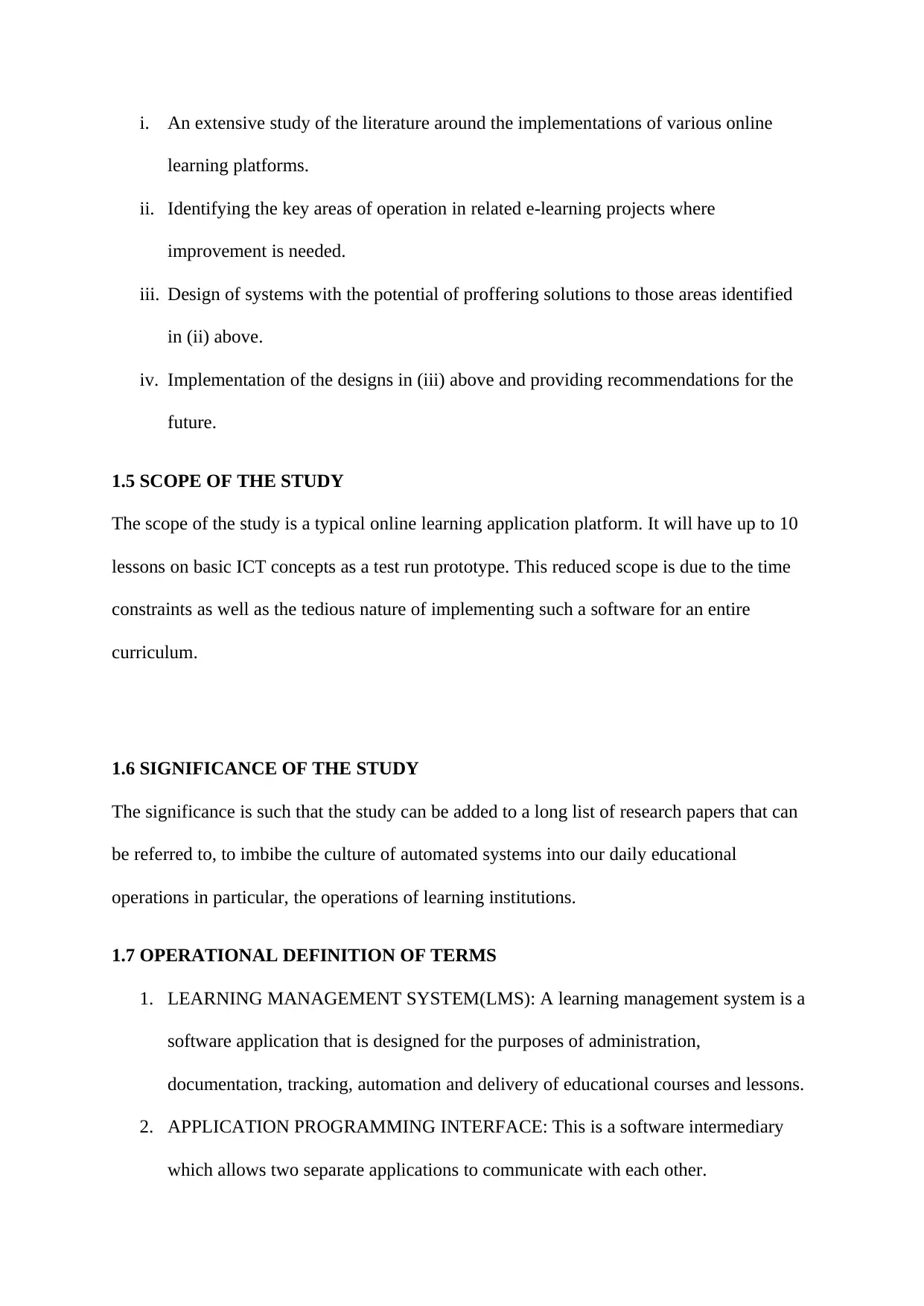
i. An extensive study of the literature around the implementations of various online
learning platforms.
ii. Identifying the key areas of operation in related e-learning projects where
improvement is needed.
iii. Design of systems with the potential of proffering solutions to those areas identified
in (ii) above.
iv. Implementation of the designs in (iii) above and providing recommendations for the
future.
1.5 SCOPE OF THE STUDY
The scope of the study is a typical online learning application platform. It will have up to 10
lessons on basic ICT concepts as a test run prototype. This reduced scope is due to the time
constraints as well as the tedious nature of implementing such a software for an entire
curriculum.
1.6 SIGNIFICANCE OF THE STUDY
The significance is such that the study can be added to a long list of research papers that can
be referred to, to imbibe the culture of automated systems into our daily educational
operations in particular, the operations of learning institutions.
1.7 OPERATIONAL DEFINITION OF TERMS
1. LEARNING MANAGEMENT SYSTEM(LMS): A learning management system is a
software application that is designed for the purposes of administration,
documentation, tracking, automation and delivery of educational courses and lessons.
2. APPLICATION PROGRAMMING INTERFACE: This is a software intermediary
which allows two separate applications to communicate with each other.
learning platforms.
ii. Identifying the key areas of operation in related e-learning projects where
improvement is needed.
iii. Design of systems with the potential of proffering solutions to those areas identified
in (ii) above.
iv. Implementation of the designs in (iii) above and providing recommendations for the
future.
1.5 SCOPE OF THE STUDY
The scope of the study is a typical online learning application platform. It will have up to 10
lessons on basic ICT concepts as a test run prototype. This reduced scope is due to the time
constraints as well as the tedious nature of implementing such a software for an entire
curriculum.
1.6 SIGNIFICANCE OF THE STUDY
The significance is such that the study can be added to a long list of research papers that can
be referred to, to imbibe the culture of automated systems into our daily educational
operations in particular, the operations of learning institutions.
1.7 OPERATIONAL DEFINITION OF TERMS
1. LEARNING MANAGEMENT SYSTEM(LMS): A learning management system is a
software application that is designed for the purposes of administration,
documentation, tracking, automation and delivery of educational courses and lessons.
2. APPLICATION PROGRAMMING INTERFACE: This is a software intermediary
which allows two separate applications to communicate with each other.
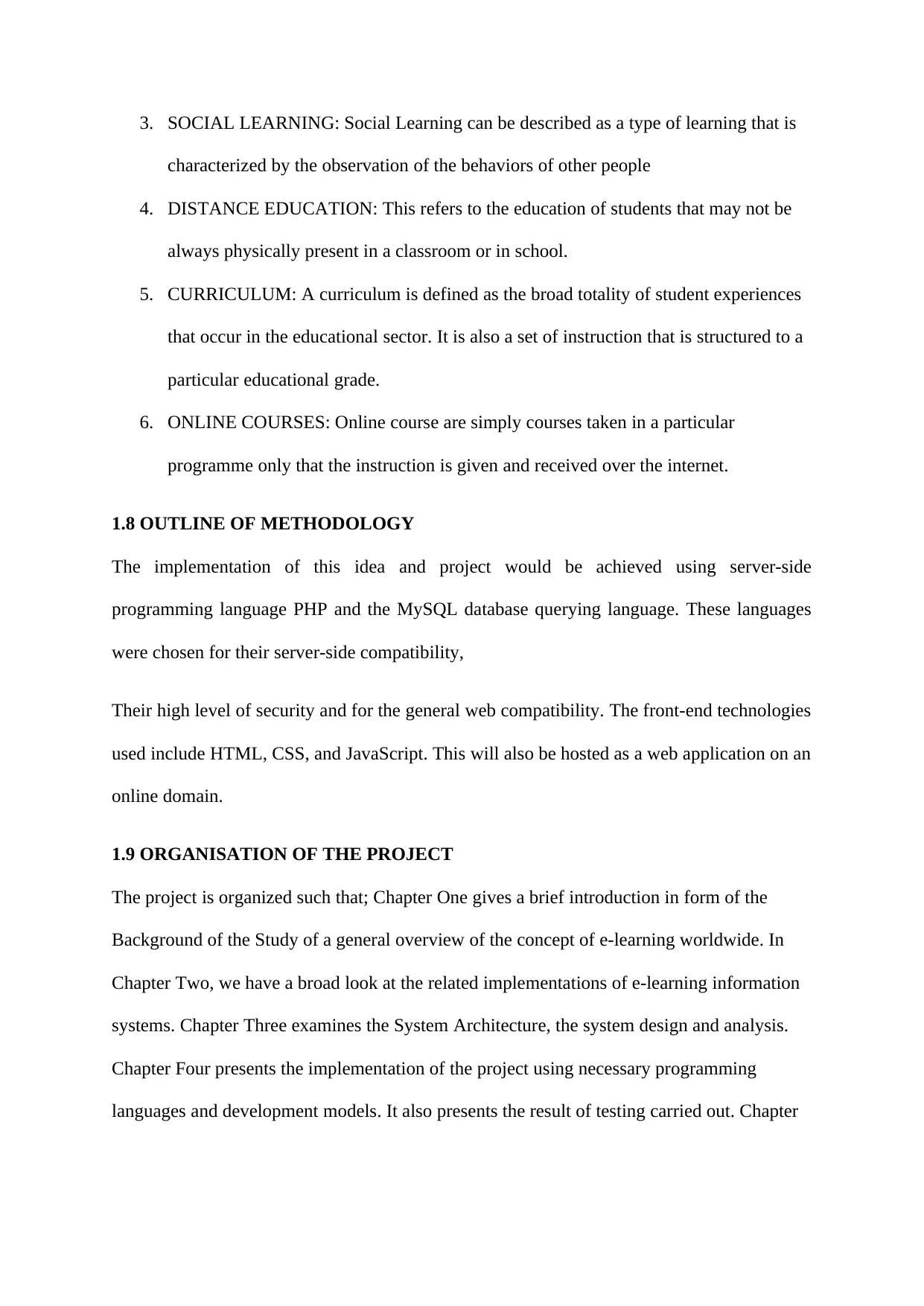
3. SOCIAL LEARNING: Social Learning can be described as a type of learning that is
characterized by the observation of the behaviors of other people
4. DISTANCE EDUCATION: This refers to the education of students that may not be
always physically present in a classroom or in school.
5. CURRICULUM: A curriculum is defined as the broad totality of student experiences
that occur in the educational sector. It is also a set of instruction that is structured to a
particular educational grade.
6. ONLINE COURSES: Online course are simply courses taken in a particular
programme only that the instruction is given and received over the internet.
1.8 OUTLINE OF METHODOLOGY
The implementation of this idea and project would be achieved using server-side
programming language PHP and the MySQL database querying language. These languages
were chosen for their server-side compatibility,
Their high level of security and for the general web compatibility. The front-end technologies
used include HTML, CSS, and JavaScript. This will also be hosted as a web application on an
online domain.
1.9 ORGANISATION OF THE PROJECT
The project is organized such that; Chapter One gives a brief introduction in form of the
Background of the Study of a general overview of the concept of e-learning worldwide. In
Chapter Two, we have a broad look at the related implementations of e-learning information
systems. Chapter Three examines the System Architecture, the system design and analysis.
Chapter Four presents the implementation of the project using necessary programming
languages and development models. It also presents the result of testing carried out. Chapter
characterized by the observation of the behaviors of other people
4. DISTANCE EDUCATION: This refers to the education of students that may not be
always physically present in a classroom or in school.
5. CURRICULUM: A curriculum is defined as the broad totality of student experiences
that occur in the educational sector. It is also a set of instruction that is structured to a
particular educational grade.
6. ONLINE COURSES: Online course are simply courses taken in a particular
programme only that the instruction is given and received over the internet.
1.8 OUTLINE OF METHODOLOGY
The implementation of this idea and project would be achieved using server-side
programming language PHP and the MySQL database querying language. These languages
were chosen for their server-side compatibility,
Their high level of security and for the general web compatibility. The front-end technologies
used include HTML, CSS, and JavaScript. This will also be hosted as a web application on an
online domain.
1.9 ORGANISATION OF THE PROJECT
The project is organized such that; Chapter One gives a brief introduction in form of the
Background of the Study of a general overview of the concept of e-learning worldwide. In
Chapter Two, we have a broad look at the related implementations of e-learning information
systems. Chapter Three examines the System Architecture, the system design and analysis.
Chapter Four presents the implementation of the project using necessary programming
languages and development models. It also presents the result of testing carried out. Chapter
⊘ This is a preview!⊘
Do you want full access?
Subscribe today to unlock all pages.

Trusted by 1+ million students worldwide
1 out of 13
Related Documents
Your All-in-One AI-Powered Toolkit for Academic Success.
+13062052269
info@desklib.com
Available 24*7 on WhatsApp / Email
![[object Object]](/_next/static/media/star-bottom.7253800d.svg)
Unlock your academic potential
Copyright © 2020–2025 A2Z Services. All Rights Reserved. Developed and managed by ZUCOL.





